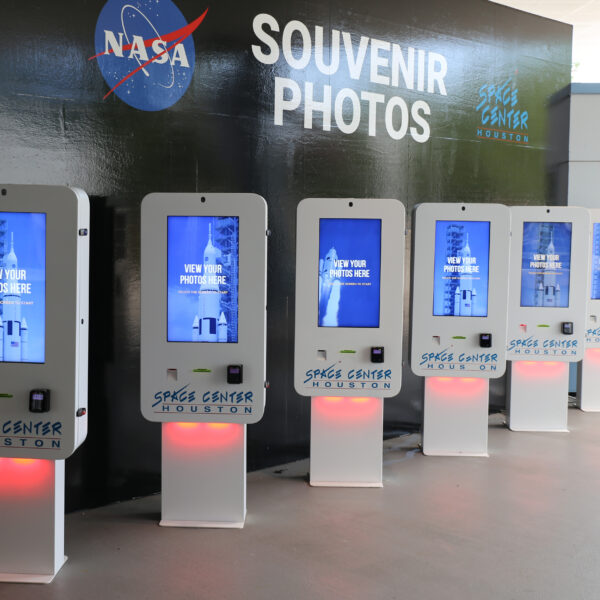
Kiosks
Close
Kiosk Industries


In the busy world of retail, first impressions are important. That’s why a well-planned store display can turn a casual browser into a loyal customer.
Yet, when planning in-store displays, some brands succumb to common pitfalls that can detract from the shopping experience, and ultimately, sales.
In this article, we delve into prevalent display missteps and outline the clear objectives that need to be outlined for a successful outcome.
Poorly designed displays can be attributed to several reasons, but often they’re due to poor planning or cutting corners on costs. Here are a few of the most common errors.
Problem 1: Counter displays that are too large will limit areas for display.
Knowing the environment where your counter displays will be placed is crucial. Whether that’s done through a site survey or working closely with the retailer (or both!), it’s important to have clarity on where the display will be placed. Even amongst box store locations, counters and layouts can vary, so be certain your display will fit properly by getting all needed measurements from every site.
Problem 2: Selecting cheap materials jeopardizes a display’s lifespan.
Displays built with good materials will hold up better in bustling retail environments than those manufactured with cheap or temporary substrates. While it’s often a larger investment up front, utilizing quality materials provides eventual cost savings because displays last longer in the field and endure less breakdown over time.
Problem 3: Not building in features that safeguard against wear and tear.
High foot traffic and shopping carts can spell trouble for displays. When designing for a point of purchase program, make sure corner and kick guards are included in the plans. Features like this help withstand the abuse from customers and shopping cart bumps by protecting the display from damage in vulnerable areas.
Problem 4: Forgoing updateability.
Designing a retail display that can be updated with new graphics, panels, or For Display Only merchandise can extend its life in the field considerably. When planning your next display, consider building in the ability to use update kits. With update kits, your display can be modified seasonally or when new marketing or products roll out, and in turn, save you money by lengthening the display’s lifecycle.
While common design flaws can derail a retail program by shortening its lifespan or increasing costs, having clear objectives can help avoid these issues in the first place.
Below are areas brands should be aware of before embarking on a retail display program.
Understand the Customer Experience
Recognizing how a customer will interact with a display and the products it holds is the first step to implementing a successful program. By understanding this customer experience, displays can be designed to attract attention, engage shoppers, and effectively sell the featured merchandise.
Know the Retail Footprint
Understanding the retail footprint where a display will live is paramount to effective display placement. If a display is too large, it will not fit in the environment. If it’s too small, it will be unrecognizable and ineffective in reaching its target audience.
Recognize Branding Guidelines
It’s important to have a clear understanding of branding guidelines for both the store environment as well as the product line for approved design and material selection. If a display does not blend into a retail environment, store planners can reject the entire set up.
Remember Safety First
Because retail displays are placed in public environments where people interact with both the product and display, it’s crucial there are no tripping hazards, electrical concerns, and that displays or kiosks pass all tip tests.
Ensure ADA Compliance
It’s imperative to ensure all customers can utilize your display. Recognizing ADA needs is important to ensure necessary ancillary components are added to make the display compliant.
Identify the Display’s Lifespan
Design a display around the length of time you anticipate it will be placed in a retail environment. For shorter lifespans, temporary materials like corrugated cardboard are fine. However, semi-permanent materials should be used for a display that needs to last up to a year, and permanent materials are essential for displays that need to last longer.
Build for Updateability
By talking with your display manufacturer in advance, designers can offer areas where graphics, posters, or headers can easily be changed over time to extend the life of the display and account for changing marketing campaigns or seasonal promotional updates. Beyond graphics, some displays can utilize update kits to provide even more updateability for changing product lines.
Consider Retail Theft
Shrink continues to rise and retail theft should be a consideration for brands that sell expensive merchandise. Building in additional safeguards to secure product can prevent loss.
Maximizing the effectiveness of retail displays will pay off with new customers and brand loyalty. Avoiding common pitfalls like inappropriate sizing, subpar materials, and lack of durability can greatly improve the success and lifespan of a display. To prevent these flaws, being clear with specific objectives is essential.